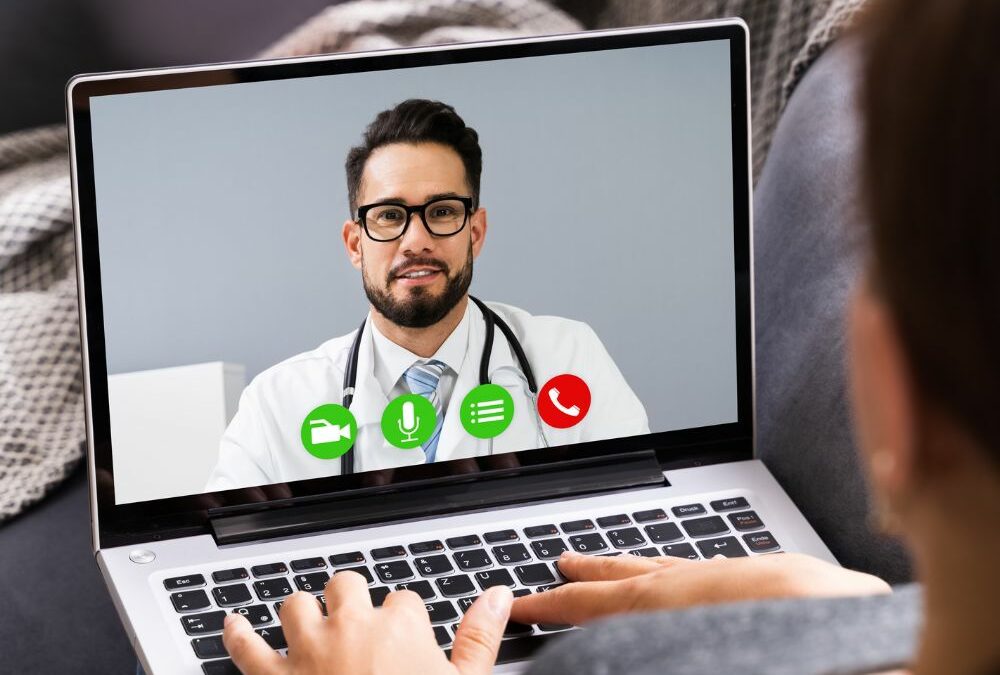
The Future Of Video Conferencing
Technology has always been at the centre of medical innovations. Throughout the years, technology has contributed to the medical industry on both sides: patients and professionals. At a time, when social distancing is among the major measures used to fight COVID-19 pandemic, telehealth is stepping-up as a key technology for safe and efficient communications.
The rise of video conferencing used for medical care holds a lot of potential for the future of consultations. Also known as “telehealth“, this new approach to medical communication utilises video conferencing and presents many benefits, especially in the context of a pandemic like the current COVID-19 crisis.
 Cost and Time Optimisation
Cost and Time Optimisation
As video-consultations require fewer resources such as material and supplies and are more time-effective, and in the private healthcare industry, they could be offered at a cheaper and more affordable price than physical consultations.
Doctors are also using their time more efficiently and could reduce their commuting time, as well as their costs associated with attending meetings or training.
Faster Diagnosis
Telehealth offers the possibility of a quicker communication process between professionals and quicker access to knowledge. This not only benefits professionals but also provides patients with quicker, better, and more informed care. Flexibility is also extremely important in this kind of instance to add in multiple participants in the call, for example, an interpreter, a physician, or a specialist which would not usually be typically arranged as part of a normal consultation.

Safe and Accessible Care
An immediate benefit of telehealth is for patients who are unable to reach the appropriate facilities. Whether they are suffering from reduced mobility, health conditions or simply have no way to visit a professional, virtual consultations allow them to receive medical care and help instantly.
In our current context of Coronavirus, telehealth is of tremendous help to the medical industry, as it allows infected patients to be supervised and regularly checked on without putting themselves or others at risk. It allows people with symptoms or potentially infected patients who have not yet received a diagnosis to consult with professionals and receive appropriate help and advice.
For vulnerable people such as the elderly or people with underlying health issues who are or are not infected, telehealth is a solution for them to stay safe and still receive medical attention without putting themselves at risk.
In the medical industry, technology is ever changing in response to the apparition of new challenges. Telehealth demand is growing fast in the industry and shows great benefits to professionals and patients alike, interconnecting them in more efficient ways to exchange knowledge and offer care and attention at a larger scale and in challenging times.
Here are another 10 benefits to video conferencing in the Healthcare Industry
- Improved access to medical care for patients in rural or remote areas: Video conferencing technology is a game-changer for patients who live in rural or remote areas, where access to medical care can be limited. By enabling doctors to consult with their patients remotely, video conferencing can help to bridge the gap between patients and medical professionals, ensuring that everyone has access to the care they need.
- Increased convenience for patients who have difficulty traveling to a doctor’s office: For many patients, especially those who are elderly or have mobility issues, traveling to a doctor’s office can be difficult or even impossible. Video conferencing technology allows these patients to receive medical care from the comfort of their own home, eliminating the need for them to travel long distances to see a doctor.
- Ability to share medical images and other data in real-time: One of the key benefits of video conferencing in the healthcare industry is the ability to share medical images and other data in real-time. This makes it possible for doctors to diagnose and treat patients remotely, without the need for an in-person visit. It also allows medical professionals to collaborate on complex cases, ensuring that patients receive the best possible care.
- Improved collaboration among medical professionals on complex cases: Video conferencing technology makes it easier for doctors to consult with each other and share information about their patients. This can be particularly helpful in cases where multiple doctors or specialists are involved in a patient’s care, as it allows them to coordinate their efforts and work together to provide the best possible treatment.
- Reduced need for in-person visits, which can save time and money for both patients and doctors: By enabling doctors to conduct virtual “visits” with their patients, video conferencing can help to reduce the need for in-person visits. This can save time and money for both patients and doctors, as it eliminates the need for patients to travel to a doctor’s office and for doctors to spend time seeing patients in person.
- Improved continuity of care for patients who require ongoing treatment: For patients who require ongoing treatment, it can be difficult to ensure that their care is consistent and coordinated. Video conferencing technology can help to improve continuity of care by enabling doctors to monitor their patients remotely and intervene as needed.
- Easier to coordinate care among multiple doctors or specialists: In cases where multiple doctors or specialists are involved in a patient’s care, coordinating their efforts can be challenging. Video conferencing technology makes it easier for these doctors to communicate with each other and work together to provide the best possible care for the patient.
- Potential to reduce healthcare costs by reducing the need for expensive in-person visits: By reducing the need for in-person visits, video conferencing has the potential to reduce healthcare costs. This can be particularly beneficial in areas where access to medical care is limited and patients may have to travel long distances to see a doctor.
- Improved patient outcomes by enabling doctors to monitor patients more closely and intervene more quickly: By enabling doctors to monitor their patients remotely, video conferencing technology can help to improve patient outcomes. This is because it allows doctors to intervene more quickly if they notice any changes in a patient’s condition, which can help to prevent more serious health problems from developing.
- Increased patient satisfaction by providing a more convenient and accessible form of medical care: For many patients, the convenience and accessibility of video conferencing is a major advantage. By providing a more convenient and accessible form of medical care, video conferencing technology can help to increase patient satisfaction and improve the overall quality of care.
We recently installed Video Conference system in the Queen Elizabeth Hospital. So, please get in touch with our team for a quote or to find out more about what installations we can help you with! Email us info@mediascape.ltd.uk or phone us on 0141 333 0110.





